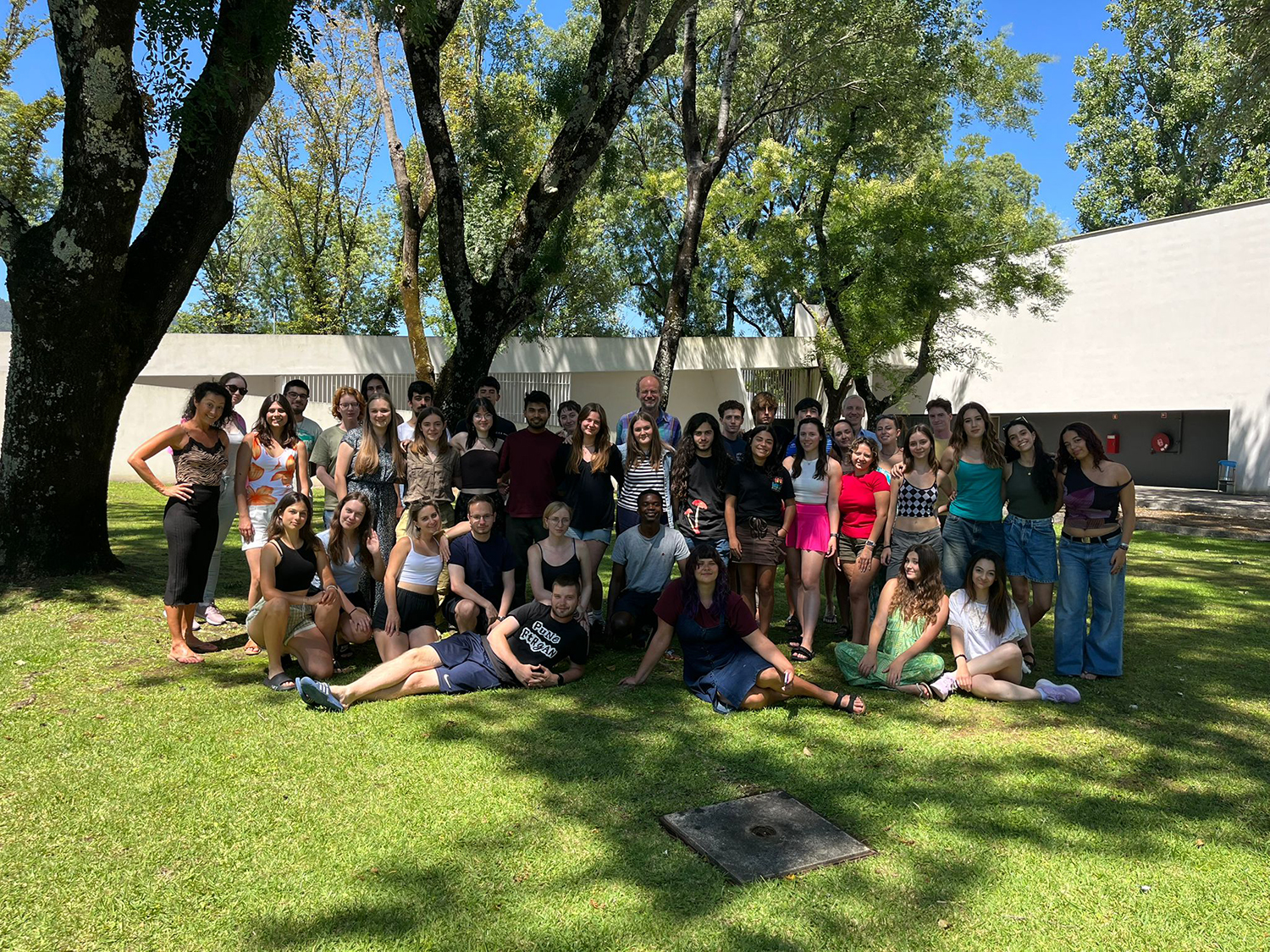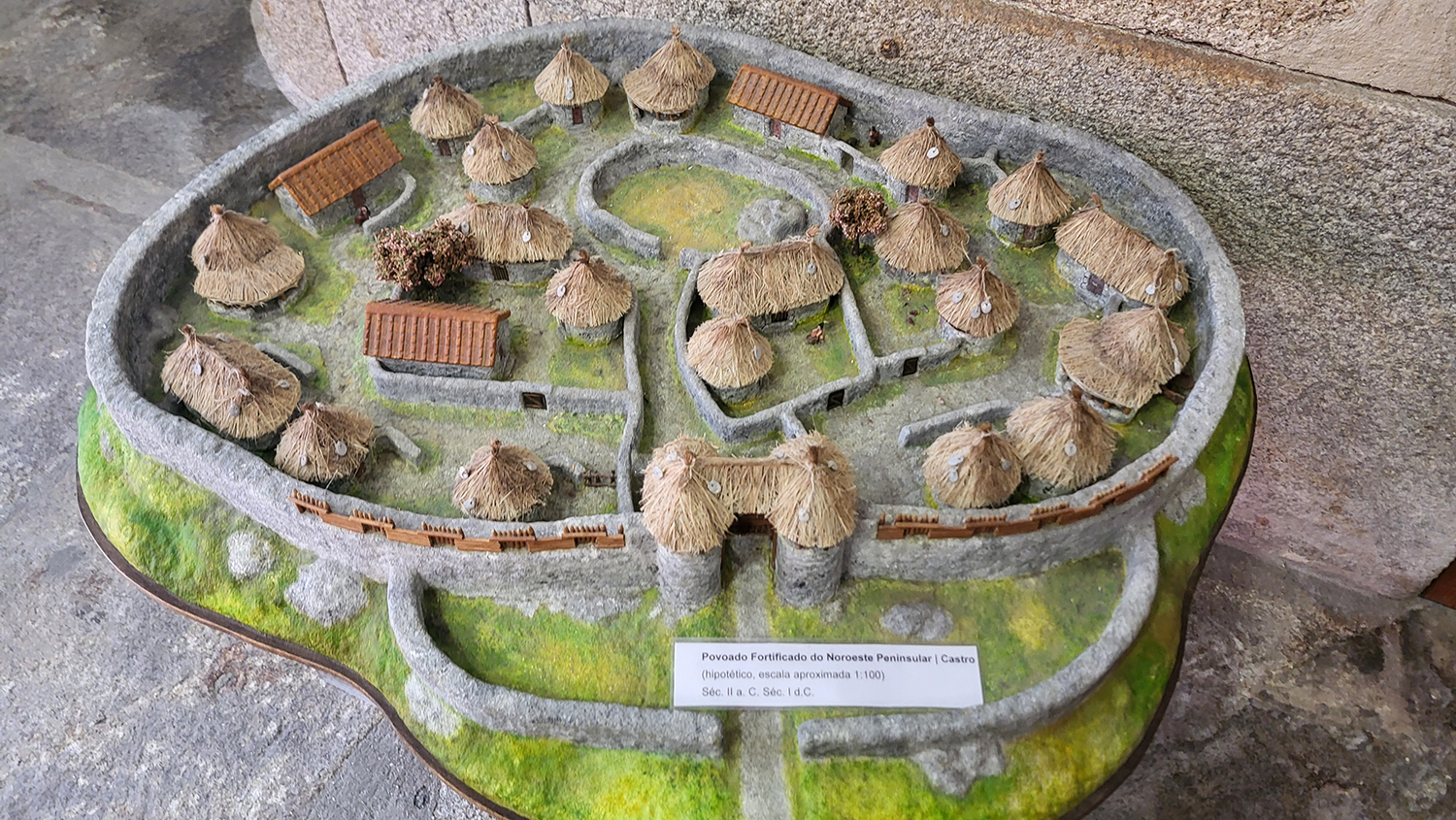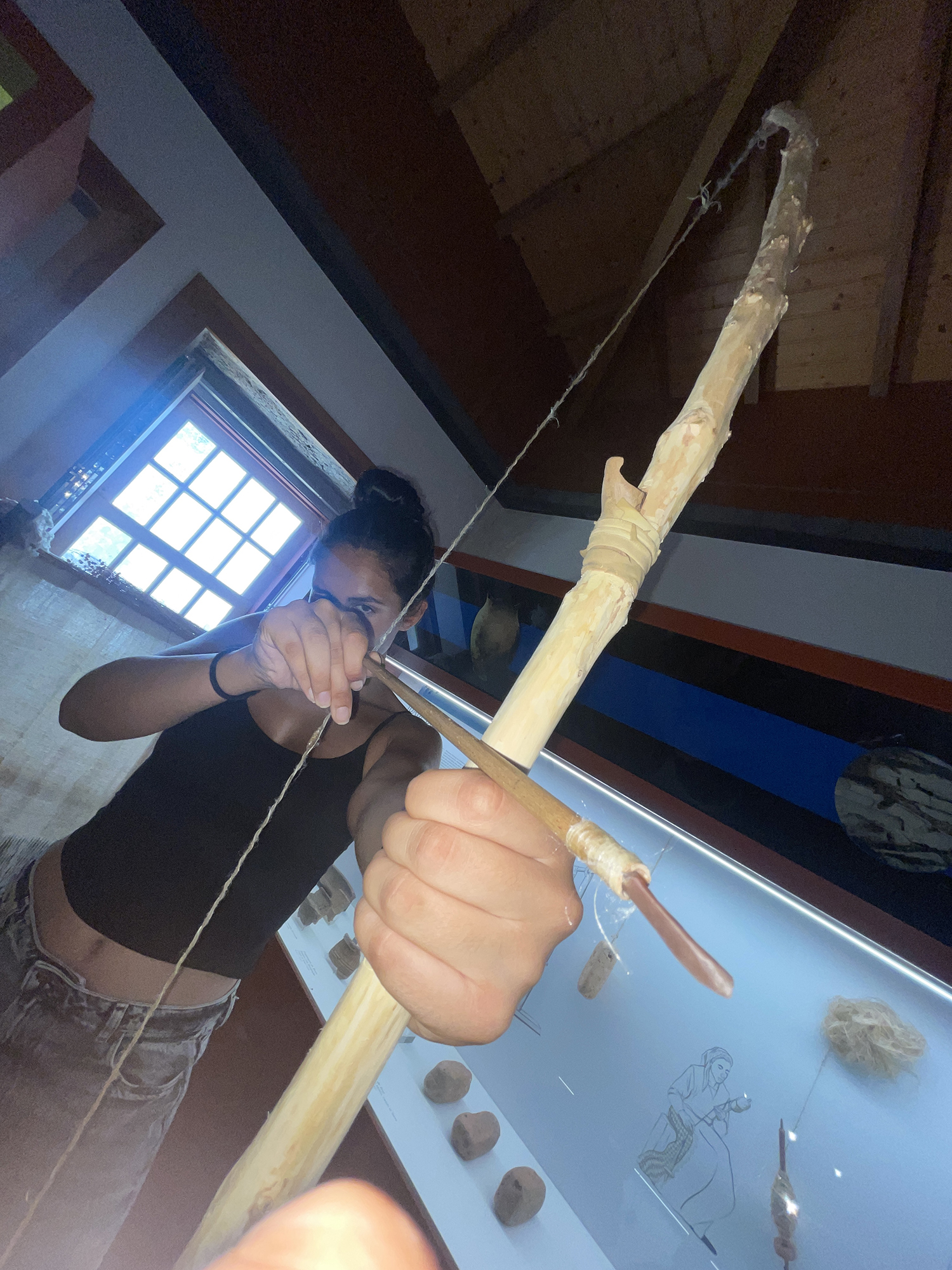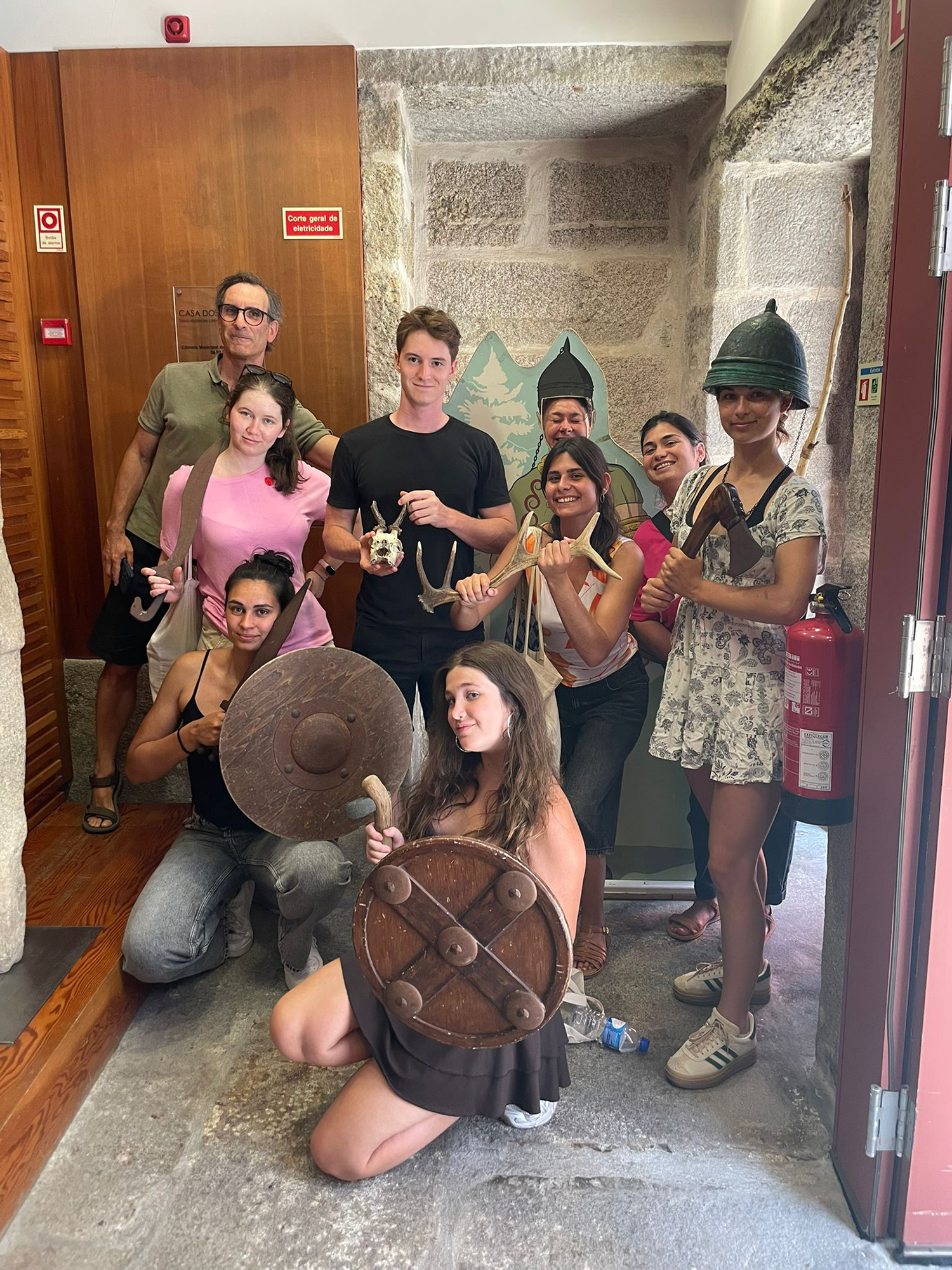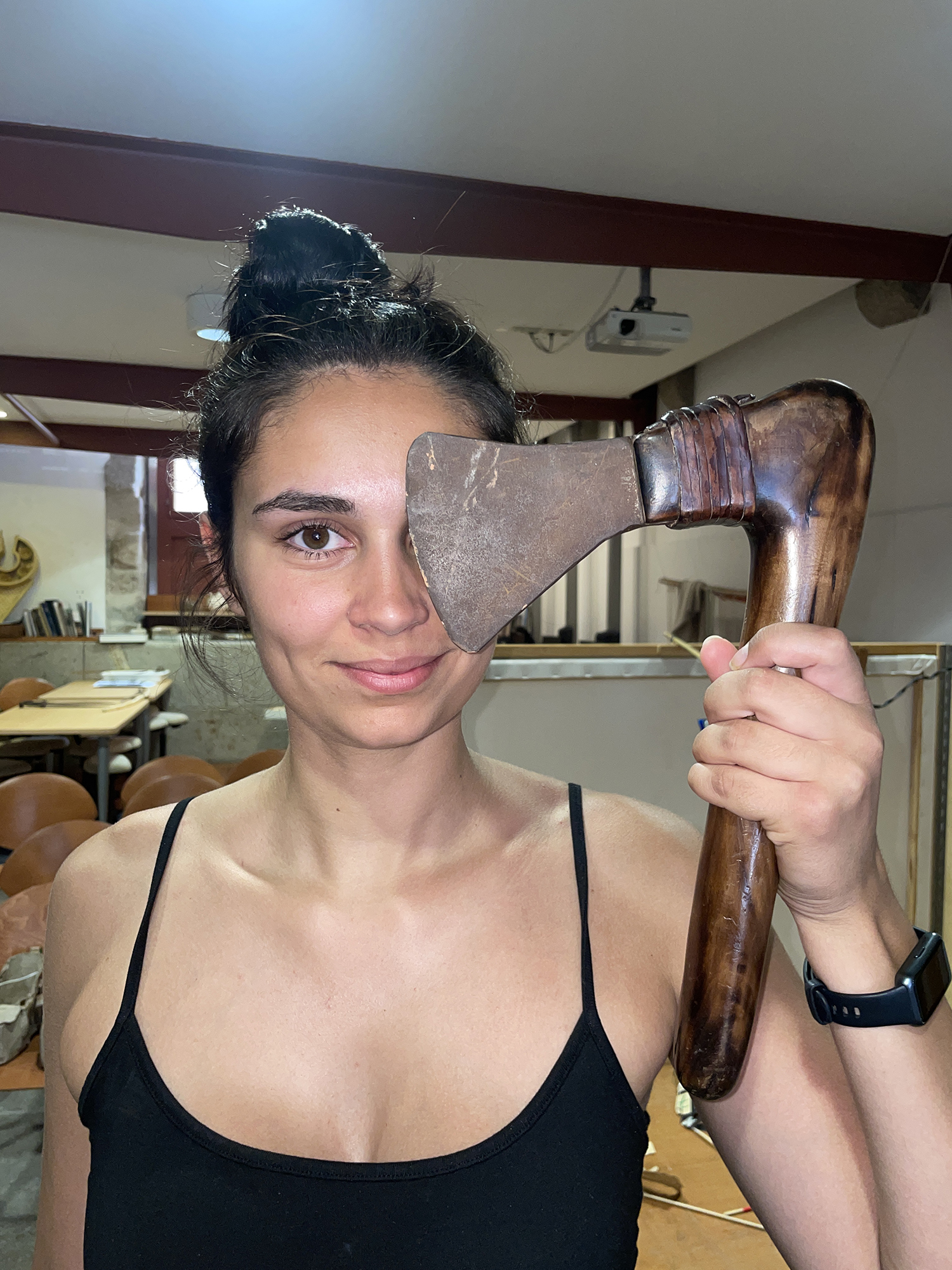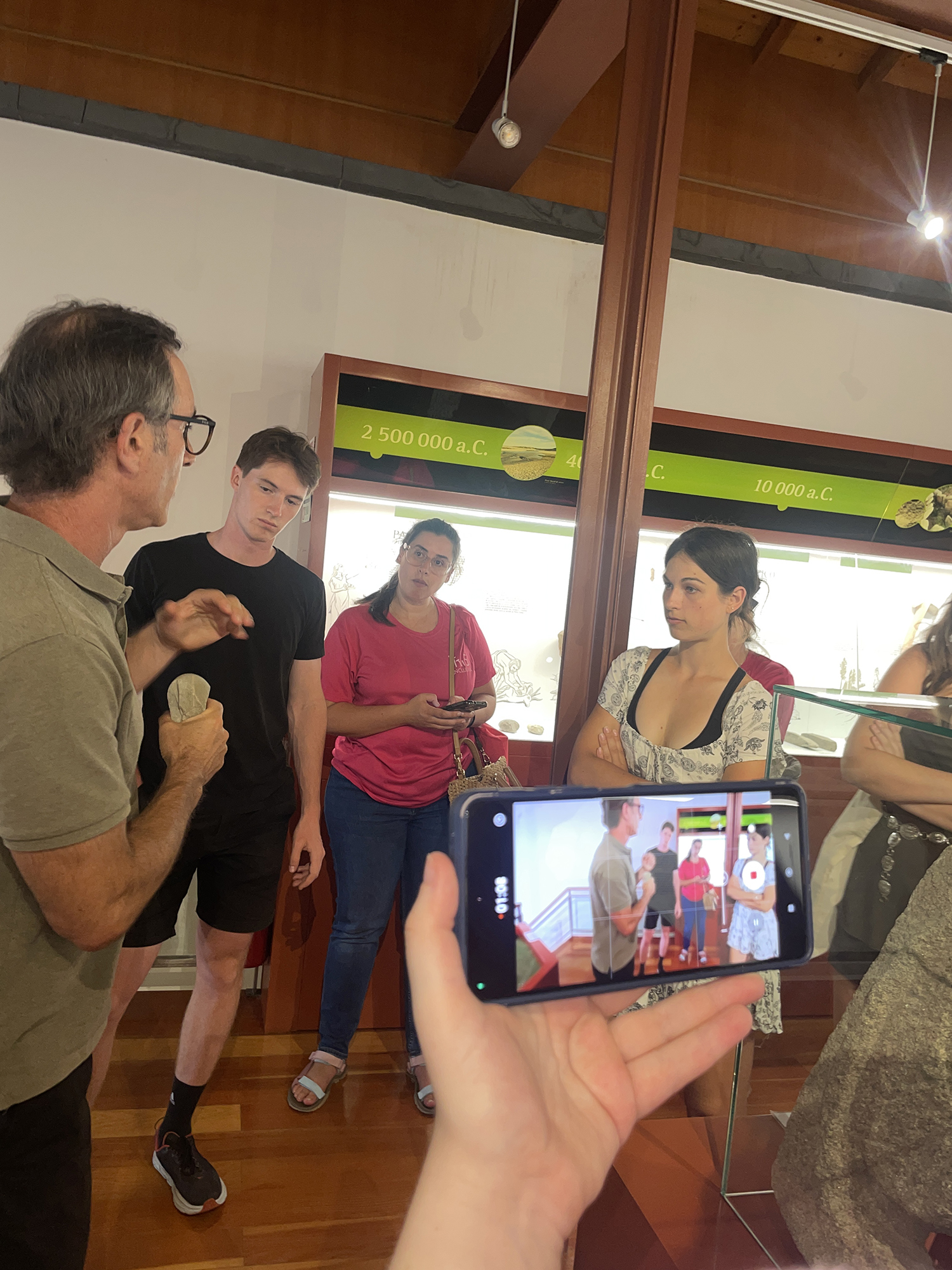Exploring the Past Through Inclusion at Casa dos Nichos
Bridging heritage and future towards more sustainable tourism
In July 2025, forty volunteers from across Europe gathered in Portugal for a youth seminar of the Travel Different for Future (TDFF) programme. This initiative brings young people together to rethink how tourism can become more inclusive, sustainable, and meaningful.
Carlota Neves
I was part of the Inclusion Research Team, whose work was closely connected to the cultural theme, since the two often overlap, especially when travelling. Our task was to explore how cultural tourism can be made more accessible and inclusive, and to identify examples where small but powerful changes have transformed the visitor experience.
As such a large group, we were divided into four teams, each focusing on a different topic. I was part of the Inclusion Research Team, whose work was closely connected to the cultural theme, since the two often overlap, especially when travelling. Our task was to explore how cultural tourism can be made more accessible and inclusive, and to identify examples where small but powerful changes have transformed the visitor experience.
Our visit to the museum of Casa dos Nichos in Viana do Castelo became a central part of this research. Nestled in this charming northern Portuguese town, Casa dos Nichos is more than just a small archaeology exhibition. It is a living example of how history can be shared in ways that engage, educate, and include all kinds of visitors. Its ability to link Roman history with modern values of inclusion makes it an inspiring case study for the tourism of tomorrow.
A journey through time
The museum is built upon the remains of a Roman house, allowing us to literally stand on layers of history and imagine the daily life of families nearly two millennia ago. Its main exhibition focuses on the archaeological site of Milreu, a nearby Roman villa of great significance to Portuguese heritage. Artefacts from this site provide a glimpse into the architecture, craftsmanship, and social organisation of Roman times.
But what sets Casa dos Nichos apart is its hands-on approach. Instead of just observing artefacts behind glass, we were encouraged to touch reproductions, handle objects, and experience them directly. This gave us a unique opportunity to engage with history not only intellectually but also physically and emotionally. This was especially powerful for us as the Inclusion Research Team, since we were researching how to create tourism experiences that truly welcome everyone, regardless of ability.
Trying on the replica of a Roman soldier’s helmet, I immediately felt the sheer weight pressing down on my head and shoulders. It was heavier than I expected, and it made me reflect on the strength and endurance Roman soldiers must have needed to march long distances in battle gear. Holding the bow and arrow was another revelation; pulling the string back required surprising force, and aiming with precision proved far from easy. These small physical challenges helped us empathise with the resilience and discipline of ancient soldiers. They showed us how tactile interaction can reveal aspects of history that no textbook could fully convey.
Another highlight was the detailed miniature model of the Roman town and villa. Through its tiny streets and carefully reconstructed buildings, we could picture the lives of families, workers, and soldiers who once filled this space with energy and routine. The model told a story of community life, rituals, and resilience. Standing around it, we imagined children playing in courtyards, women preparing meals, and merchants trading goods. It was like stepping into a vivid snapshot of Roman society, one that reminded us that these ruins were once homes and meeting places filled with laughter, work, and daily struggles.
Debates within our team
After the visit, our group gathered to reflect on what we had seen. One of our main debates centred on this question: should cultural institutions aim for large numbers of visitors, or should they prioritise more meaningful, smaller-scale experiences? Some argued that high visitor numbers ensure financial stability and visibility, making it easier to fund preservation projects. Others insisted that depth of engagement and personal connections matter more, since meaningful experiences are what inspire visitors to respect, protect, and return to heritage sites. This debate reflected wider questions in today’s tourism policy, where balancing economic viability with cultural integrity remains a pressing challenge.
Another discussion focused on inclusivity: who gets to tell the stories of heritage, and how can museums ensure that all communities feel represented? We reflected on how Casa dos Nichos, with its tactile reproductions, can serve as a model for accessibility. For visually impaired visitors, being able to touch artefacts transforms their experience from one of exclusion to one of genuine participation. We also discussed the need to include narratives of women, children, and enslaved people in the telling of Roman history, as these voices are often marginalised in traditional accounts. This is precisely the kind of inclusive practice that our group aims to highlight and promote in our work. Representation is not only about physical access but also about whose stories are being shared.
Connecting the past to the future differently
Our visit to Casa dos Nichos was not just a pleasant excursion but part of our mission to rethink tourism. By focusing on accessibility and inclusion, we aim to create a vision of tourism that benefits everyone—not only travellers with the privilege and resources to visit easily but also those who face barriers such as disability, financial constraints, or cultural exclusion. This aligns with the broader TDFF vision of making travel a tool for cultural exchange, learning, and empowerment.
The Casa dos Nichos embodies these values. It shows that cultural heritage can be preserved and presented in a way that is engaging and inclusive. Visitors are encouraged to slow down, to touch, to listen, and to reflect. The quiet, intimate environment of the museum contrasts with the fast-paced consumption of mass tourism. In this way, tourism becomes not just an economic activity but a cultural bridge between past and future, accessible to a wider audience. It also highlights how local communities can use heritage as a resource to strengthen identity and foster intercultural dialogue.
Our vision for inclusive tourism
As the Inclusion Team, we imagined a tourism model where accessibility is a given, not an afterthought. This means considering the needs of people with disabilities by ensuring ramps, braille descriptions, and audio guides are available. It also means celebrating LGBTQ+ identities and making space for stories of historically marginalised communities whose voices have often been silenced in heritage narratives. Inclusivity, for us, also means designing experiences that foster dialogue and exchange, where visitors and locals learn from one another and create a shared sense of belonging. Museums like Casa dos Nichos demonstrate how tactile, sensory experiences can ensure that no one is left out of history.
We also recognise that inclusivity goes hand in hand with sustainability. Tourism should not exploit or overburden communities. Instead, it should bring opportunities for growth, pride, and mutual respect. Sustainable tourism requires careful planning to protect natural and cultural resources while allowing people to benefit from them. Innovation, such as digital tools, can broaden access by offering virtual tours or interactive content online. But authentic, human moments—like feeling the weight of a Roman helmet or the tension of a bowstring—remain irreplaceable. These tangible experiences create emotional bonds that deepen our appreciation of the past.
We invite you to explore further
Our reflections on Casa dos Nichos form part of a wider exploration that we continue through the TDFF initiative. In other articles and interviews we have published, including with ILGA and IRIS, we delved deeper into these themes and explored how different communities across Europe are rethinking tourism. We invite you, dear traveller, to join us, follow our journey, and help shape a future of tourism that is not only innovative and high-quality but also rooted in fairness, accessibility, and respect. By supporting inclusive and sustainable practices, you become part of a movement that ensures that cultural heritage is not locked away in the past but remains alive, shared, and relevant for generations to come.

